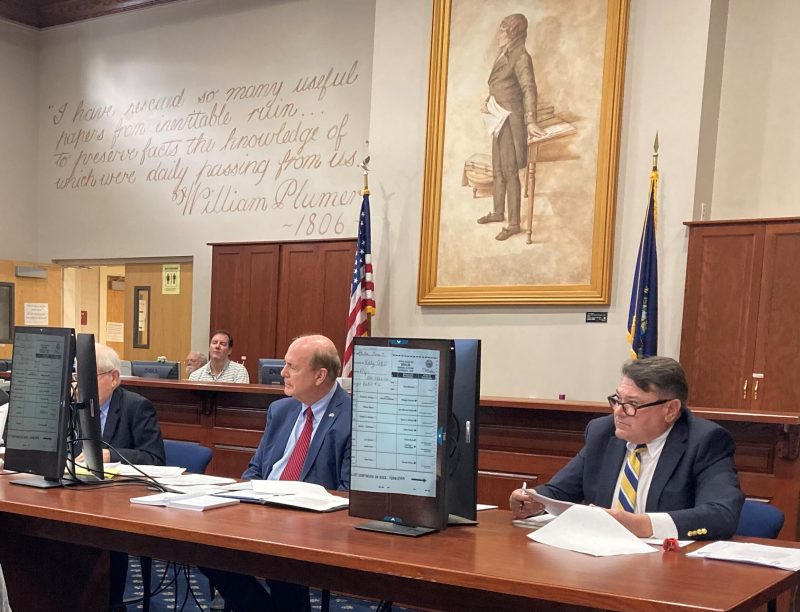Almost everyone knows how closely decided the 2016 election was. Many people don’t realize how close 2020 was, as well. But the 2022 election was right there with both of them.
One of the undersold trends in American politics is just how narrowly elections are suddenly being decided. After a series of mostly wave elections from 2006 to 2014, three of the past four elections have been decided by exceedingly fine margins.
Shifts of less than one percentage point across the board could have flipped both the 2016 and 2020 presidential elections. The current and next Congresses account for two of the five most closely divided Houses in the past century, with either side winning just a nine-seat majority. And the Senate has moved from a 50-50 Senate controlled by Democrats to a 51-49 Senate controlled by Democrats.
This is something of a hobbyhorse of ours, and it’s worth running the numbers again, now that all the election results are in.
Inside Elections’ Jacob Rubashkin beat us to some of that this week. He calculated that Republicans won the House by fewer than 7,000 votes across the five closest contests — contests that, had Democrats won, would have kept the House under their control. (Those contests: Colorado’s 3rd District, California’s 13th, Michigan’s 10th, Iowa’s 3rd and New York’s 17th.)
The largest margin in those five races was 0.8 of a percentage point. That means that if you shift the House vote nationwide by less than one percentage point, Democrats would’ve kept their “trifecta” of control in Washington.
And that, as it turns out, is a significantly closer result even than in 2020, when Democrats won the same nine-seat majority. Back then, they won their majority by fewer than 35,000 votes combined in the five decisive districts. But the median district was decided by 2.2 percentage points, meaning Republicans would have needed a bigger across-the-board shift to flip the majority.
Rubashkin calculated that every other House election since 2012 featured a vote margin in the decisive races that was north of 100,000, compared to less than 7,000 in 2022.
For comparison, in 2020 Democrats won the House by the exact same spread: 222-213. But in their 5 closest victories, Democratic candidates outpaced their GOP opponents by 34,734 votes – nearly 4x. And both of those years were far narrower than the GOP dominance of 2014 and 2016. pic.twitter.com/vgDOjvgb5M
— Jacob Rubashkin (@JacobRubashkin) December 13, 2022
The fact that a 0.8 percent shift that would’ve swung the 2022 battle for the House is on-par with how close the 2016 and 2022 elections were.
In 2016, Donald Trump won the three decisive states — Michigan, Pennsylvania and Wisconsin — all by 0.8 points or less.
And despite President Biden’s sizable 2020 popular vote win, he won the three decisive states — Arizona, Georgia and Wisconsin — all by 0.6 points or less. (Technically, flipping those states would have deadlocked the electoral college at 269 votes each, but the House would have broken the tie, and most delegations were controlled by the GOP.)
Republicans were also effectively one-quarter of 1 percent away from keeping control of the Senate in 2020; that’s the margin by which Sen. David Perdue (R-Ga.) missed avoiding a runoff, which he later lost.
So that’s four cases, in the past four elections, in which less than 1 percentage point determined who would control the White House (twice) or whether Democrats would have a trifecta in Washington (twice).
The story was similar in some key races for control of state governments. To wit:
In Arizona, Democrats prevented a GOP trifecta by winning the governor’s race by 0.6 percentage points.In Kansas, they prevented a GOP trifecta by winning the governor’s race by 2.1 points — or about 21,000 votes.In Nevada, Republicans prevented a Democratic trifecta by winning the governor’s race by 1.5 points — or about 15,000 votes.In Minnesota, Democrats won the trifecta thanks to a 321-vote win for one state Senate seat, which handed them control of the chamber.In New Hampshire, Republicans maintained their trifecta thanks to just a four-vote win for a state House seat in Grafton, N.H. That gave them a 201st seat out of 400. (Another state House race is being run again because it literally ended in a tie, but the best Democrats could do even if they win that one is 199 seats.)
It remains very unlikely that any one person would ever cast a decisive vote with large-scale implications. But of late, relatively small numbers of votes are proving extremely important in American politics.

